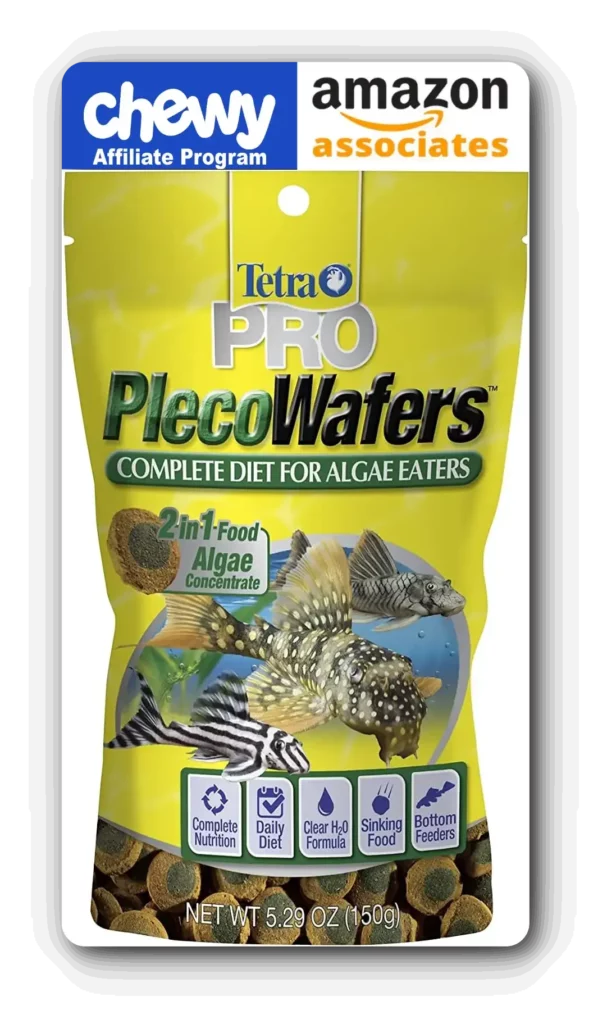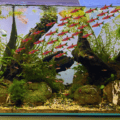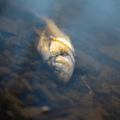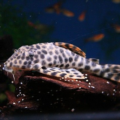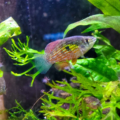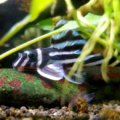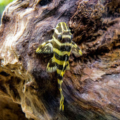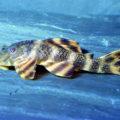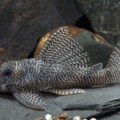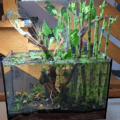The easiest actionable tips for maintaining and breeding the rare Blue Panaque, a small Pleco. Including dietary and compatibility insights for community tanks.
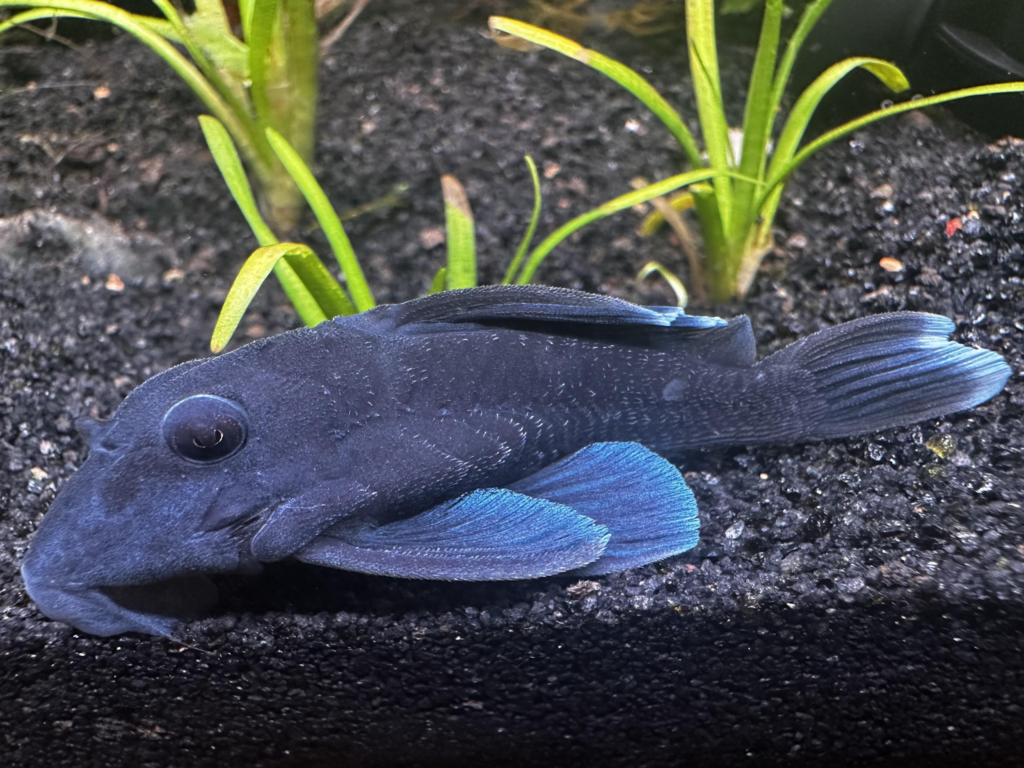
Introduction
Has it surprised you lately to see the Baryancistrus beggini, popularly called Blue Panaque, described as a jewel? This rare freshwater Pleco species from the Colombian Magdalena River Basin is a showstopper.
Although it’s renowned for its shimmering blue coloration, the Blue Panaque fish’s value comes from its rarity, which is why it’s for advanced aquarists.
Although beginners can also keep this fish, I must warn you that Blue Panaque care is better suited to experienced fish keepers.
If you are willing to face new challenges, this Baryancistrus beggini overview will help you keep one or more Blue Panaque in your aquarium.
See Also: 14 Small Pleco Species (Under 4.3″ in Adult Size) for more small plecos!
The Unique Appearance of Blue Panaque
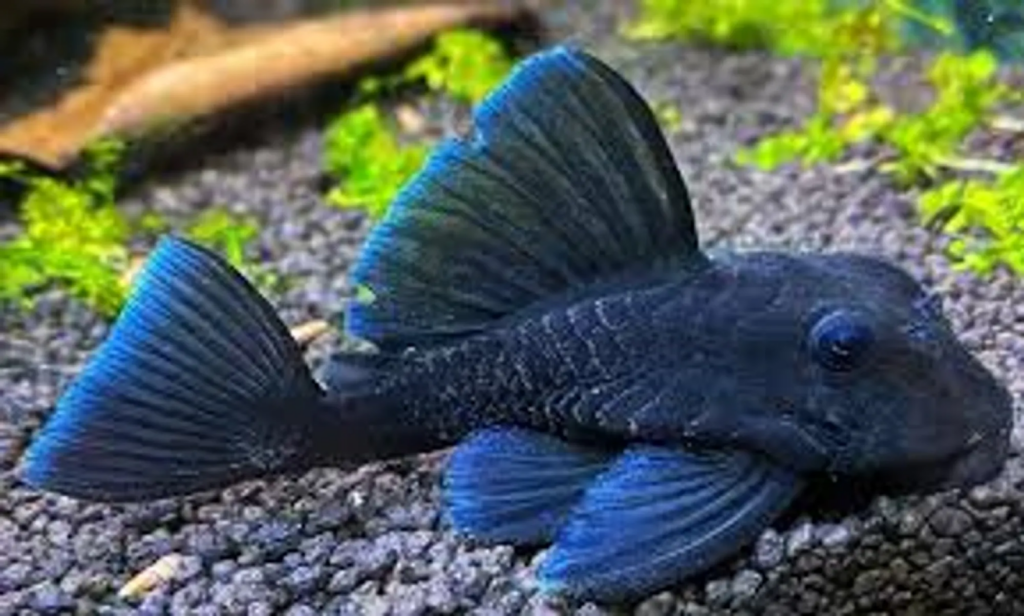
We’ll start by identifying Blue Panaque plecos and distinguishing them from other Pleco variants. Despite sharing certain traits with other plecos, they have a distinct appearance, from their shape to coloration.
Let’s examine this bejeweled fish’s vibrant blue body, subtle stripes, and thick armored scales.
Color Pattern
In a sea of unique Pleco colorations, Blue Panaques stand out with their vibrant blue armor-like scales and various patterns. The color intensity and pattern variations differ based on health, diet, age, and genetics.
Their hard scales cover a uniquely small 3 – 3.5 inches body with large heads for their size and wide suckermouths.
Having such a vibrant coloration gives this species an edge over other fish because you can confidently design a lavish aquascaped tank, and it’ll still shine.
Unique Traits
These freshwater armored plecos are typically peaceful but territorial during feeding and socialization. They are also active at night, making them nocturnal pets. You must design their habitat to accommodate these peculiarities using lighting and decoration, which we discuss in detail next.
See Also: How Big Do Plecos Get? (Max Size of 33 Popular Species)
Designing the Ideal Tank for Blue Panaque
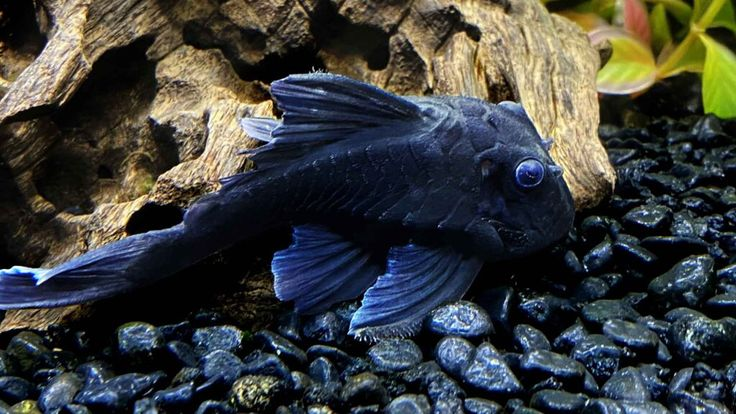
We have a few considerations for our Blue Panaque tank setup: size, environmental needs, and social needs.
Tank Size and Layout
The minimum tank size should hold 30 gallons of water per young Blue Panaque and 50 gallons for a single adult. We recommend a minimum tank size of 50 gallons with ample driftwood and caves for grazing and shelter.
Water Parameters
The ideal habitat for Plecos, including the Blue Panaque, is as follows:
| pH | 6.5 – 7.5 |
| Temperature | 75 – 86℉ |
| Hardness | 2 – 15 dGH |
| Filtration | Double Canister |
They need soft to moderately hard water that is slightly acidic to neutral and has a strong flow.
Substrate and Decor
You already know about the Blue Panaque’s body, so you’ll understand why they need soft sand or smooth gravel substrate. But besides protecting their scales while digging, grazing, or moving, the Blue Panaque habitat has to mimic its native environment.
Other decors that’ll help with functionality and aesthetics include driftwood, which is essential to their grazing diet, rocks, and caves for hiding and breeding, and firmly planted hardy plants like Anubias for shade. Use dim lighting to encourage their natural nocturnal habits.
Feeding Blue Panaque: Supporting Its Unique Diet
Although many think this species survives on a wood-eating pleco diet, but it actually doesn’t consume the wood and will need supplemental food like vegetables and algae wafers to boost its other nutritional needs. Here’s a breakdown of the ideal nutrition for Baryancistrus beggini.
Diet Suggestions
- Staples: Everyday food should be algae wafers. They encourage natural grazing behavior.
- Supplements: Occasional food to aid digestion and gut health include blanched vegetables and sinking pellets since they’re bottom dwellers.
For more on feeding your aquatic pets check out The Ultimate Guide to Fish Food: Pros and Cons & Best Choices!
Feeding Tips
Feeding Blue Panaque is an art because there’s a method to it based on timing, frequency, and portion control. Ensure there is driftwood in their tank, where they can feed off the dead plant matter and microorganisms
Also, reduce the feeding frequency of proteins and other supplements to one to two times weekly to prevent digestive issues. Remove uneaten food in the morning to maintain pristine water quality, and observe their feeding habits for signs of illnesses like discomfort or appetite loss.
Behavior and Compatibility: Blue Panaque in Community Tanks
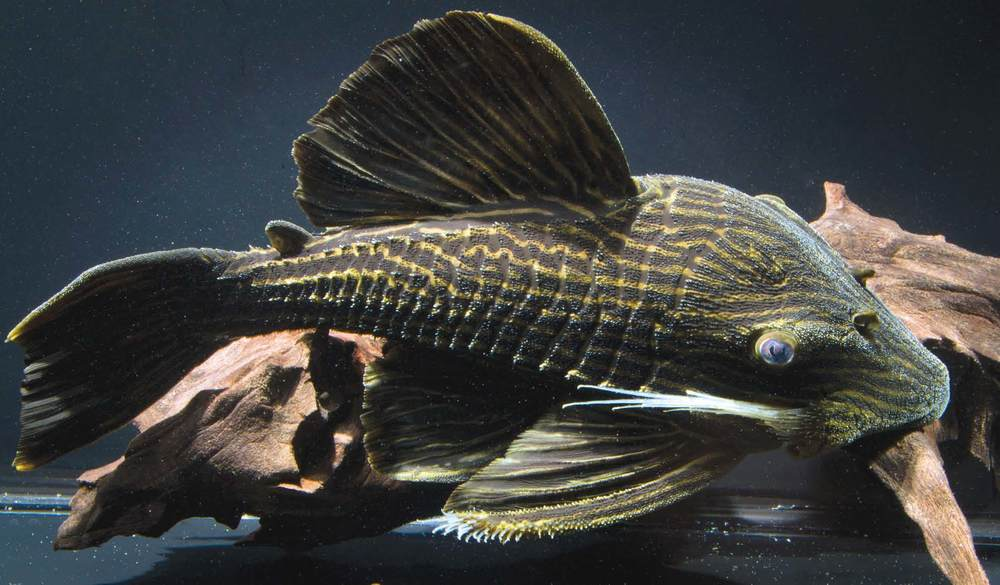
Remember earlier when I told you that Blue Panaque makes peaceful Pleco companions, but they can also become territorial? Here are some useful tips for keeping this species in a community tank.
Compatible Species
Other peaceful fish of the same size, such as Tetras, Rasboras and Corydoras catfish, are compatible tank mates for Blue Panaque.
Avoided Species
Avoid hyperactive fish that don’t respect boundaries and are likely to stress or harm them. Also, avoid larger fish because they may prey on your Blue Panaque.
However, because of its size, this species can only be a community fish for large aquariums. A single Blue Panaque needs 30 – 50 gallons of water. Now multiply that figure by the extra fish you add to the aquarium.
Lifespan of Blue Panaque: Caring for Long-Term Companions
This overview is also a Blue Panaque lifespan guide if you haven’t noticed. Every tip contained here helps reserve your pet’s life for up to 8 – 12 years.
I could tell you how proper care, a suitable diet, and stable water maximize Blue Panaque’s lifespan, but a breakdown will help you understand it better.
Lifespan Factors
| Water | Keeping pristine water reduces the chances of diseases |
| Nutrition | Adequate nutrition means better internal and external health for your pets. |
| Companions | Prioritizing compatible companions guarantees minimal stress |
Scroll down for more healthy freshwater fish tips for maximizing lifespan.
Care Tips for Longevity
Regular maintenance, such as cleaning the tank of uneaten food and using a strong filtration system to maintain pristine water quality, contributes to long-term pleco care. Daily observation for early detection of health issues will also benefit you and your pets.
Breeding Blue Panaque: A Rare Accomplishment
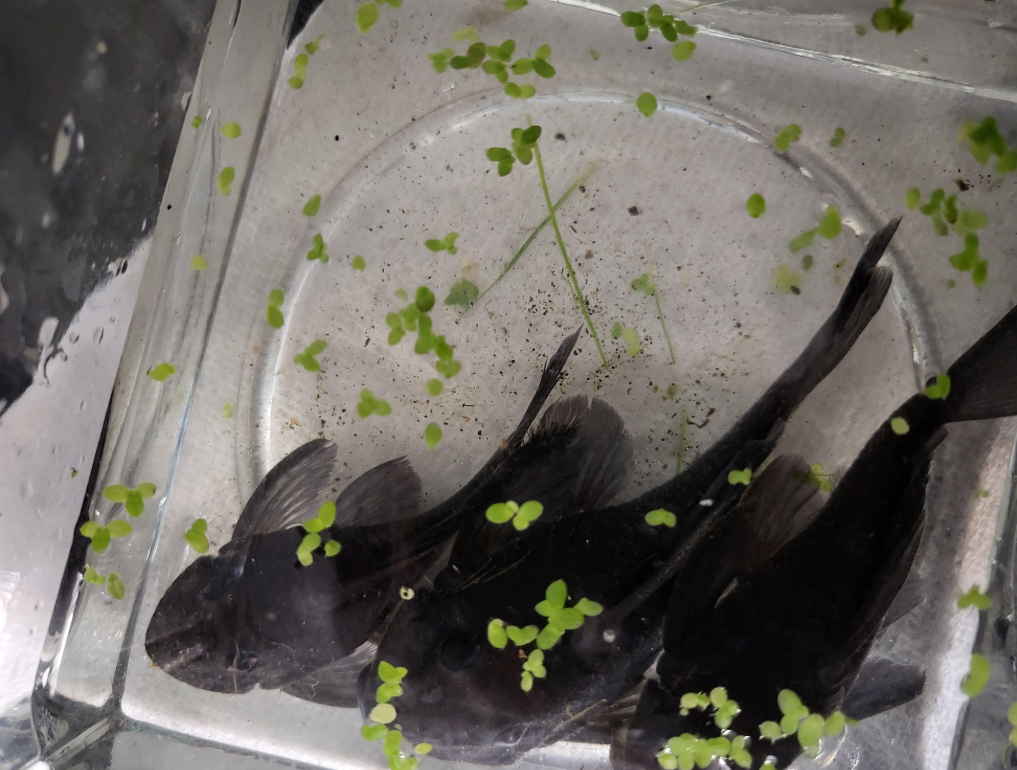
You need a separate breeding tank for your Blue Panaque
If you love Blue Panaque so much that you’re ready to reproduce as many as possible, this Baryancistrus spawning guide is for you. I must warn you that it’s a challenging activity, especially if you plan on breeding Blue Panaque in a home aquarium.
Successful reproduction is rare, but you can join the exclusive group if you follow these specific requirements closely.
Breeding Setup
I recommend getting a separate breeding tank with the same layout and specifications laid out earlier in this overview. If you can’t afford one, you can divide your large tank into two to create a breeding area, but it must meet the following specifications:
| Size | 100 gallons/pair |
| Flow | Strong |
| Temperature | 80 – 84℉ |
| Hardness | 4 – 10 dGH |
| pH | 6.5 – 7 |
| Water Change | 20 – 50% weekly |
They breed in their caves after the male chooses the site. Then, the females lay their eggs for the males to fertilize, fan, and guard. Within 5 – 7 days of fertilization, the eggs hatch.
Fry Care Tips
Fry care for rare plecos is not very different from the ordinary variants of this species. The fry also feeds on their yolk sac in the first few days before moving on to powdered food as they become free-swimming.
But you must add driftwood for grazing to aid digestion and encourage natural behaviors.
Preventing Health Issues in Blue Panaque
Maintaining healthy plecos is no small feat, as I’m sure you now understand, but it’s doable. Blue Panaque fish are also vulnerable to common health issues like malnutrition, stress-induced illnesses, and genetic deformities.
There are, however, actionable tips for preventing Pleco diseases in your Blue Panaque.
Preventative Measures
There’s no need to go over the tips already laid down in this guide, from regular water changes to a constant supply of driftwood and maintenance of stable water parameters. But if your pets still get sick, you must be ready to treat them.
Signs of Illness
Lethargy, loss of appetite, and color fading are three of the most common signs of illness in this species. They could indicate bacterial or fungus infections caused by poor diet or contaminated water.
Following the rules in this overview are the best Blue Panaque healthcare you can give your pets. So, it’s time to end this review.
Conclusion
Surely, you’re leaving this premium Pleco aquarium guide with more knowledge on Blue Panaque care than you imagined.
You have the care essentials for preserving their striking appearance, satisfying their unique dietary needs, and making this species the centerpiece in your aquarium.
You know all the rare freshwater Pleco tips for successfully keeping as many Blue Panaque fish as possible, and the best part is that you can always return to this Blue Panaque care guide if you forget!

